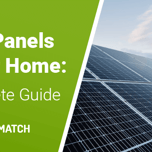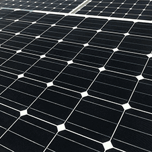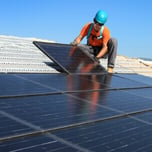
Get up to 4 quotes by filling in only 1 quick form

Slash your energy bills by installing solar panels

We’ve helped over 500,000 homeowners reduce their carbon footprint
- GreenMatch
- Solar Energy
- Solar Panels
- Photovoltaic Cells
- Silicon Solar Cells
Silicon Solar Cells
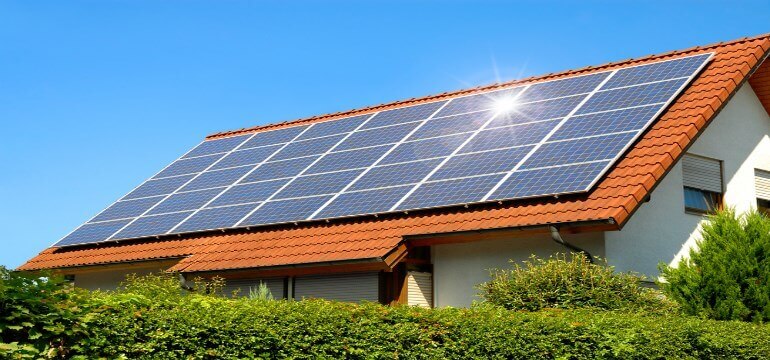
Are you considering getting solar panels for your home and want to know more about silicon solar cells and how they work? In this article, we’ll talk you through just that, including the different types and limitations.
As well as doing your own research, we always advise talking to a professional installer so you can be sure that you’re getting the right solar panels for your home.
At GreenMatch, we have an extensive network of vetted solar panel installers across the UK. By clicking the button below, we can connect you with up to 3 reliable installers available in your area.
You’ll also receive a free quote from each installer so that you can compare prices and avoid overspending on your solar panel installation. Our service is completely free and non-binding. Click the button below to get your free quotes now and have your home powered by solar in no time.
- Quotes from local engineers
- Payment by finance available
- Save up to £729 per year
It only takes 30 seconds



How Do Silicon Solar Cells Work?
The basic component of a solar cell is pure silicon, which has been used as an electrical component for decades. Silicon solar panels are often referred to as ‘1st generation’ panels, as the silicon solar cell technology gained ground already in the 1950s. Currently, over 90% of the current solar cell market is based on silicon.
Pure crystalline silicon is a poor conductor of electricity as it is a semiconductor material at its core. To address this issue, the silicon in a solar cell has impurities—meaning that other atoms are purposefully mixed in with the silicon atoms in order to improve silicon’s ability to capture the sun’s energy and convert it into electricity.
For instance, an atom of gallium has one less electron than an atom of silicon, while an arsenic atom has one electron more. When arsenic atoms are put in between lots of silicon atoms, there will be extra electrons in the structure; so an electron-rich layer will be created.
When using gallium atoms instead, there will be a lack of electrons, meaning that an electron-poor layer will be produced. In a solar cell, the layers are positioned next to each other and that way an electric field is created. When the sunlight hits the solar cell, the energy stimulates electrons that leave holes behind. These migrate to the electrodes in the cell because of the presence of the electric field. In this way, electricity is generated.
What Are Silicon Solar Cells Used For?
Back in the days, silicon solar panels used to be rather expensive, as very high-quality silicon was required for creating them. Also, the procedure of purification of silicone before interfering it with gallium and arsenic atoms used to be time-consuming and costly.
Fortunately, the development of technology soon allowed the use of cheaper and lower quality silicon. As a result, silicon solar cells are now more affordable, especially with the support of government subsidies.
The Limitations of Silicon Solar Cells
Silicon panels are not ideal for transportation since they are quite fragile and rigid. Another complication is that the parts are still fairly expensive, in comparison to some of the alternative options in the solar technology field.
Types of Silicon Solar Cells
Monocrystalline Solar Cells
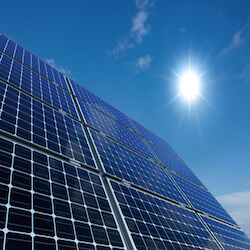
Monocrystalline solar cells, also called “single crystalline” cells are easily identified by their dark black colour. Monocrystalline solar cells are made from a very pure type of silicon, which makes them the most efficient material for converting sunlight into electricity.
In addition, monocrystalline solar cells are also the most space-efficient. Another advantage of monocrystalline cells is that they last the longest of all types – many manufacturers offer warranties of up to 25 years on these types of photovoltaic systems.
All these superior benefits come with a hefty price tag – in fact, monocrystalline cells are the most expensive option, mostly because the four sided cutting process results in wasting a lot of silicon, sometimes more than half. The cheaper alternatives for consumers would be polycrystalline- or film cells.
Polycrystalline Solar Cells

Polycrystalline solar cells, also known as polysilicon and multi-silicon cells, were the first solar cells presented to the industry, in the beginning of the 1980s. Polycrystalline cells do not undergo the cutting process used for monocrystalline cells. Instead, the silicon is melted and poured into a square mould, hence the square shape of polycrystalline.
This makes polycrystalline solar cells much more affordable, as hardly any silicon is wasted during the manufacturing process. On the minus side, they are less efficient and require more space than single crystalline cells, due to the fact that the purity level is lower in polycrystalline cells.
Another disadvantage is that polycrystalline has lower heat tolerance than monocrystalline, meaning that they are unable to function as efficiently in high temperatures.
Amorphous Solar Cells
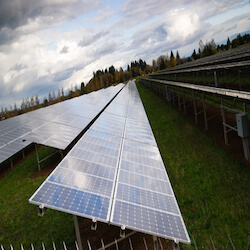
The word ‘amorphous’ literally means shapeless. The silicon is not structured or crystallised on a molecular level as many other types of silicon-based solar cells are. In the past, amorphous solar cells were used for smaller-scale applications, such as pocket calculators, because their power output was relatively low.
However, by stacking several amorphous solar cells on top of each other, their performance increased significantly (up to 8%). Amorphous silicon solar panels are a powerful and emerging line of photovoltaic systems that differ from crystalline silicon cells in terms of their output, structure, and manufacture. The material costs are reduced since amorphous silicon only requires about 1% of the silicon that would have been used to produce a crystalline-silicon based solar cell.
The development process of amorphous silicon solar panels has made them more flexible and lightweight, which makes the transportation and installation of the panels less risky. A flexible thin-film module renders amorphous solar cells suitable even for curved surfaces.
One of the drawbacks is the lower efficiency rate of amorphous thin-film solar cells. However, the technology is new, and efficiency rates are thought to increase with technological breakthroughs in the near future.
Hopefully, this article has helped and you now have a better idea of which type of solar panel is most suitable for your home. If you’re ready to take the next step and start powering your home with solar energy, we can help you find qualified and reliable installers near you.
We can provide you with up to 3 free quotes from vetted installers in our network. This means you can avoid wasting hours of your time researching and second-guessing installers’ qualifications. It also allows you to easily choose the best deal, giving you peace of mind that you’re not overspending.
Click the button below to get your free no-obligation quotes now.
- Quotes from local engineers
- Payment by finance available
- Save up to £729 per year
It only takes 30 seconds



 We strive to connect our customers with the right product and supplier. Would you like to be part of GreenMatch?
We strive to connect our customers with the right product and supplier. Would you like to be part of GreenMatch? 
